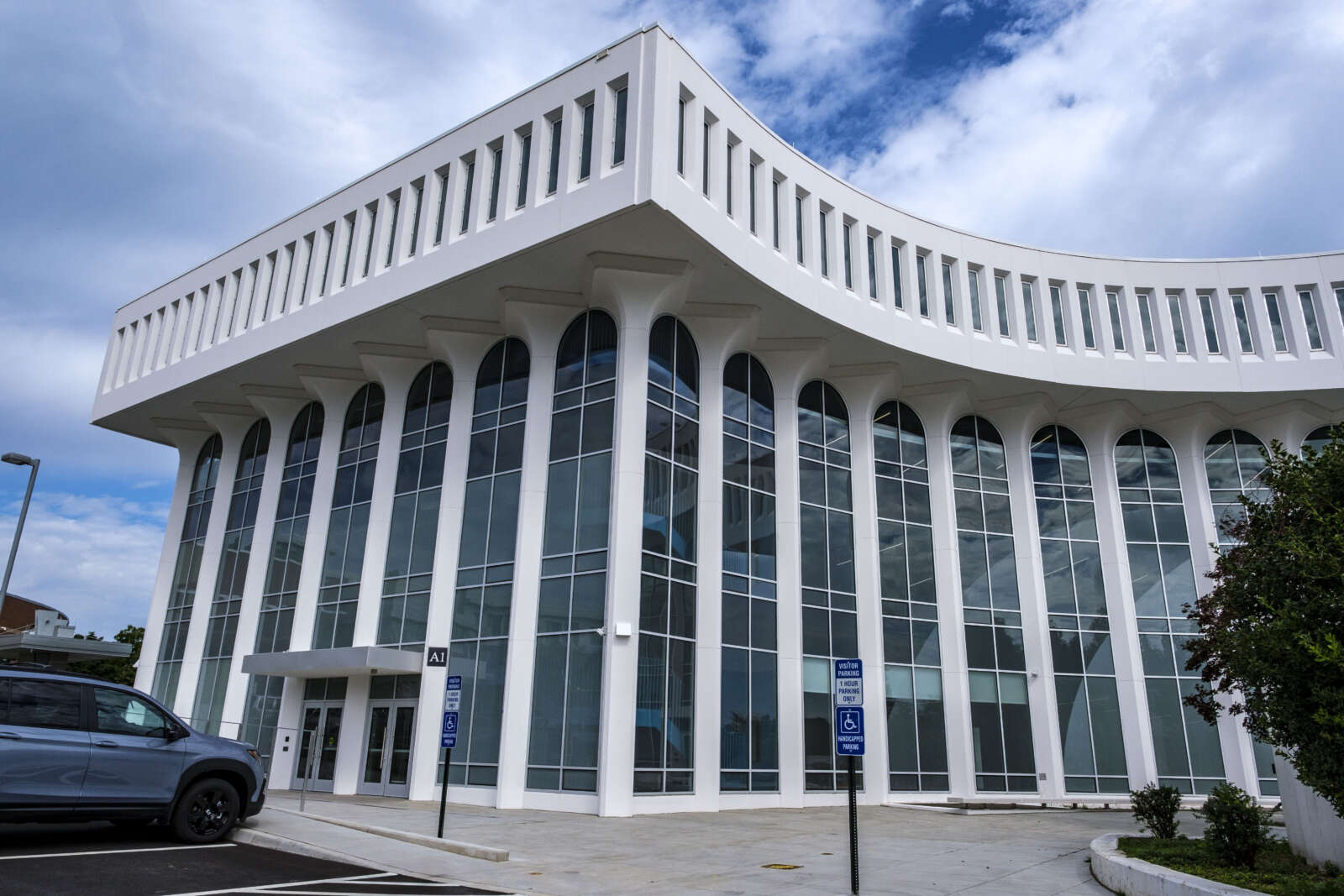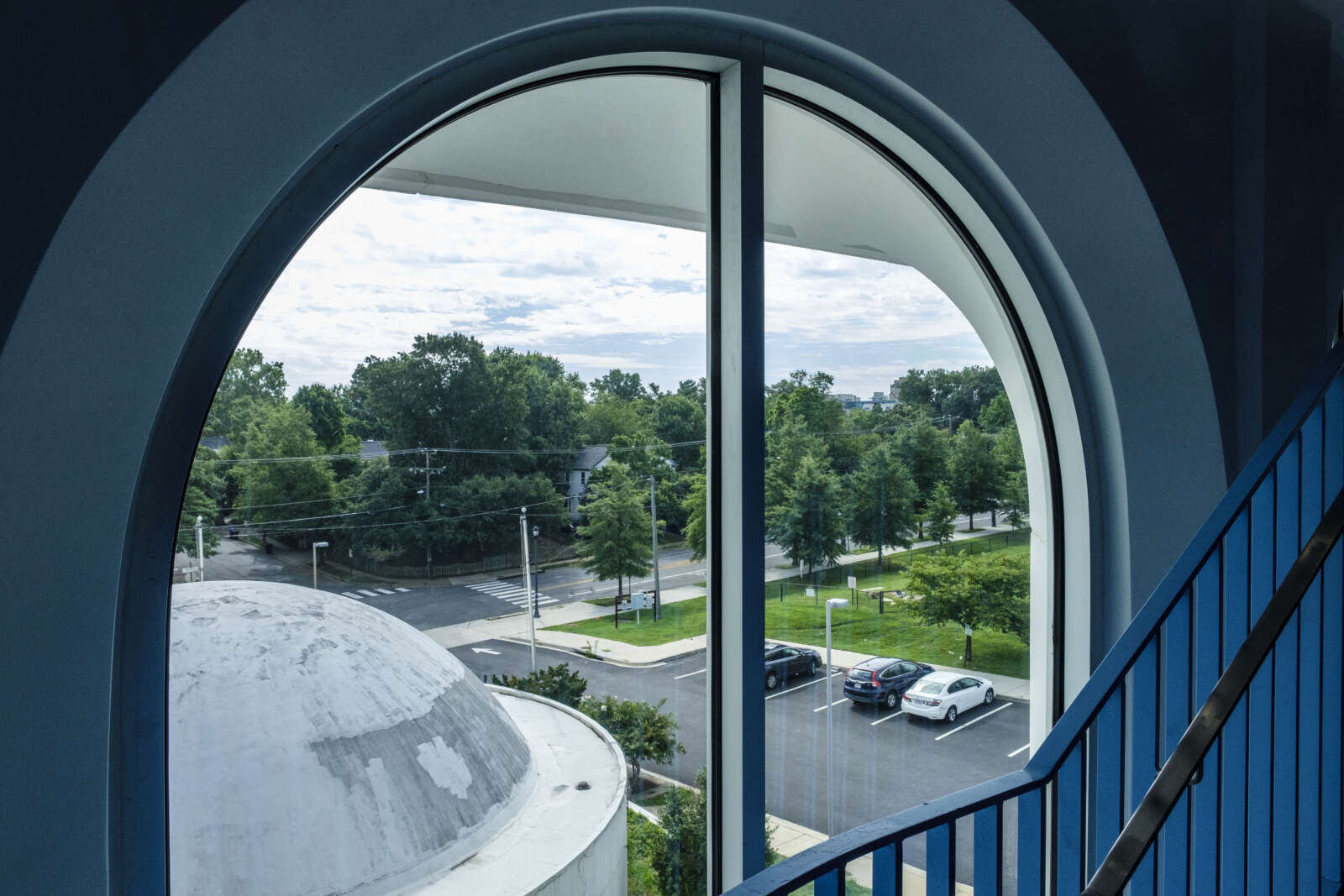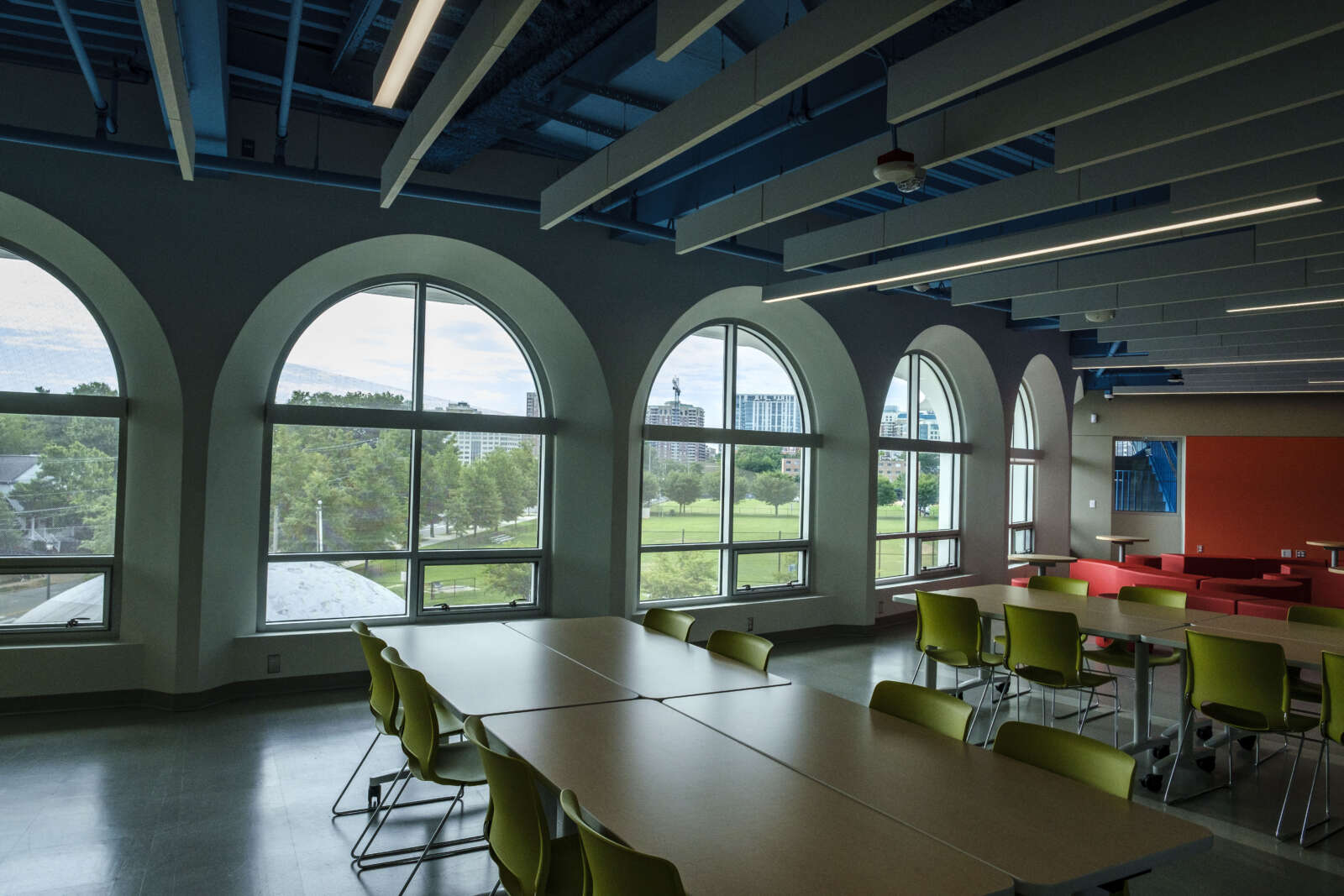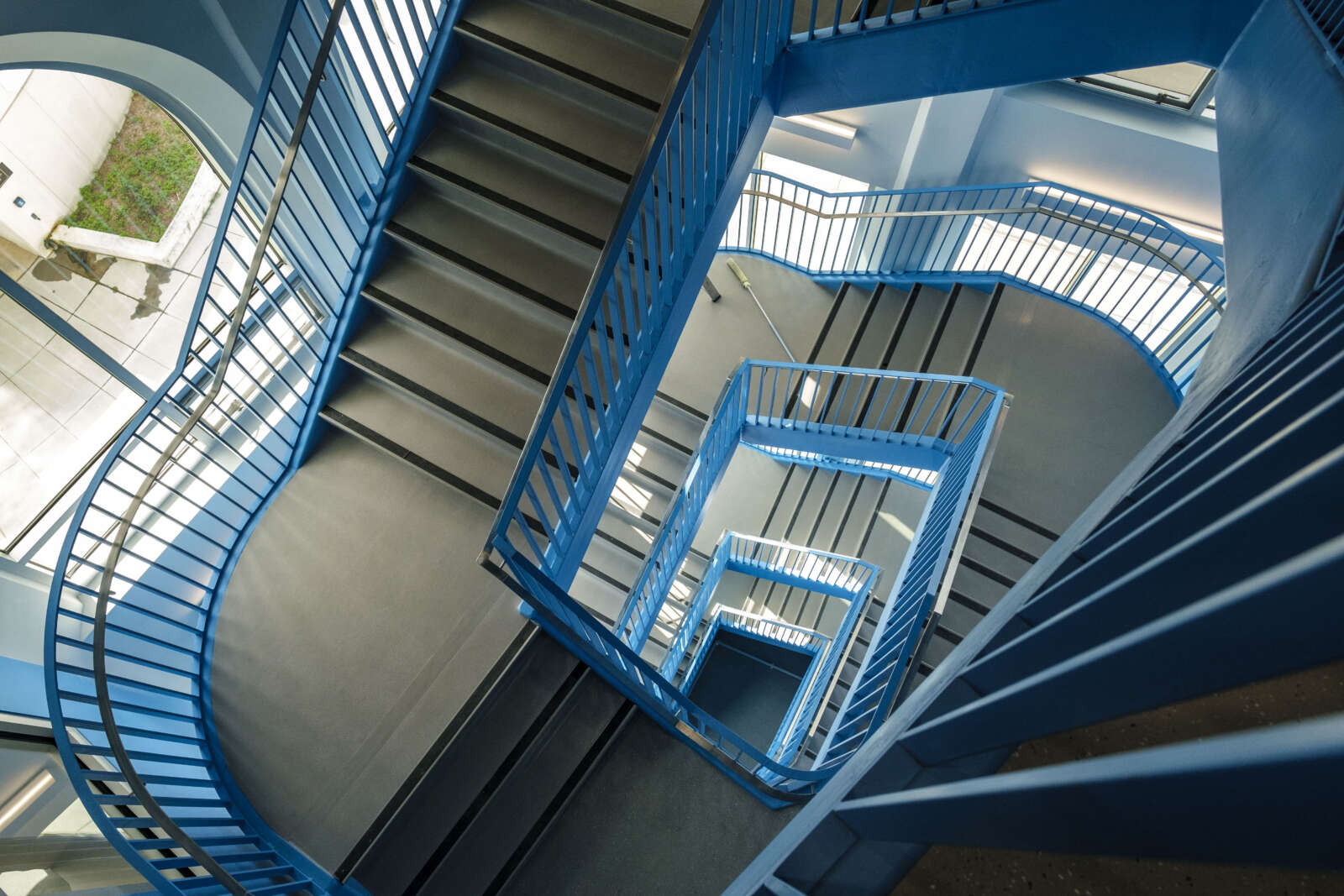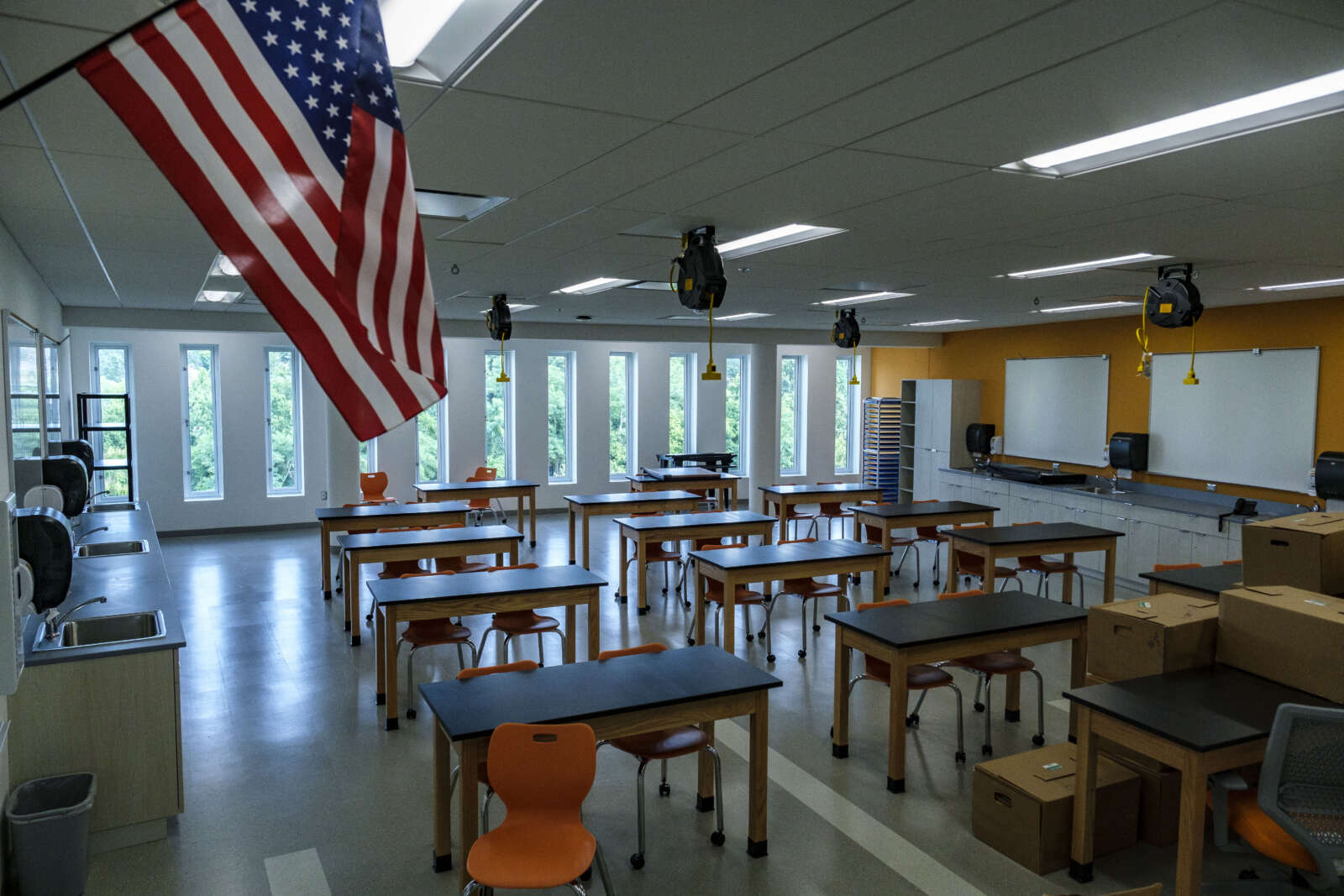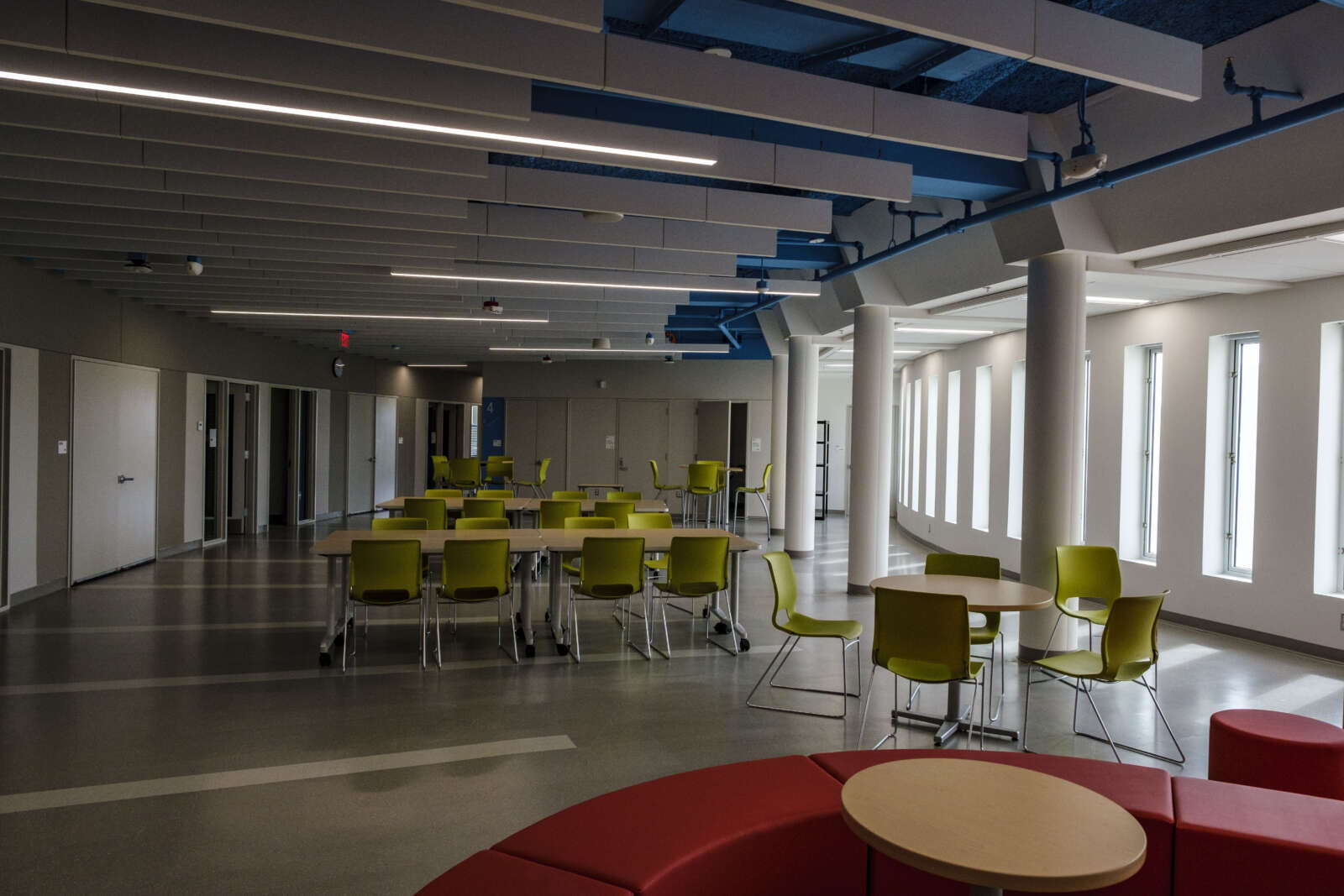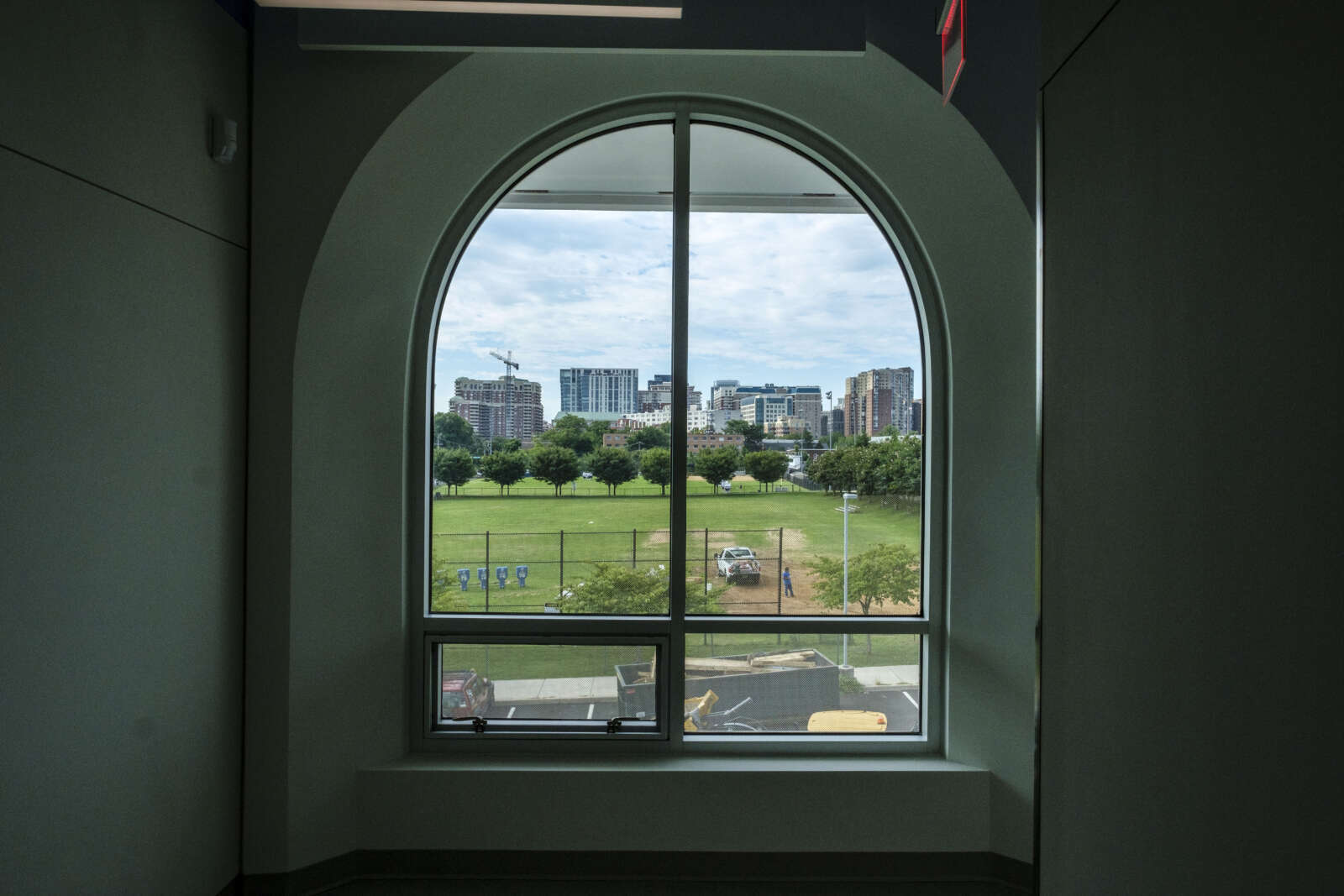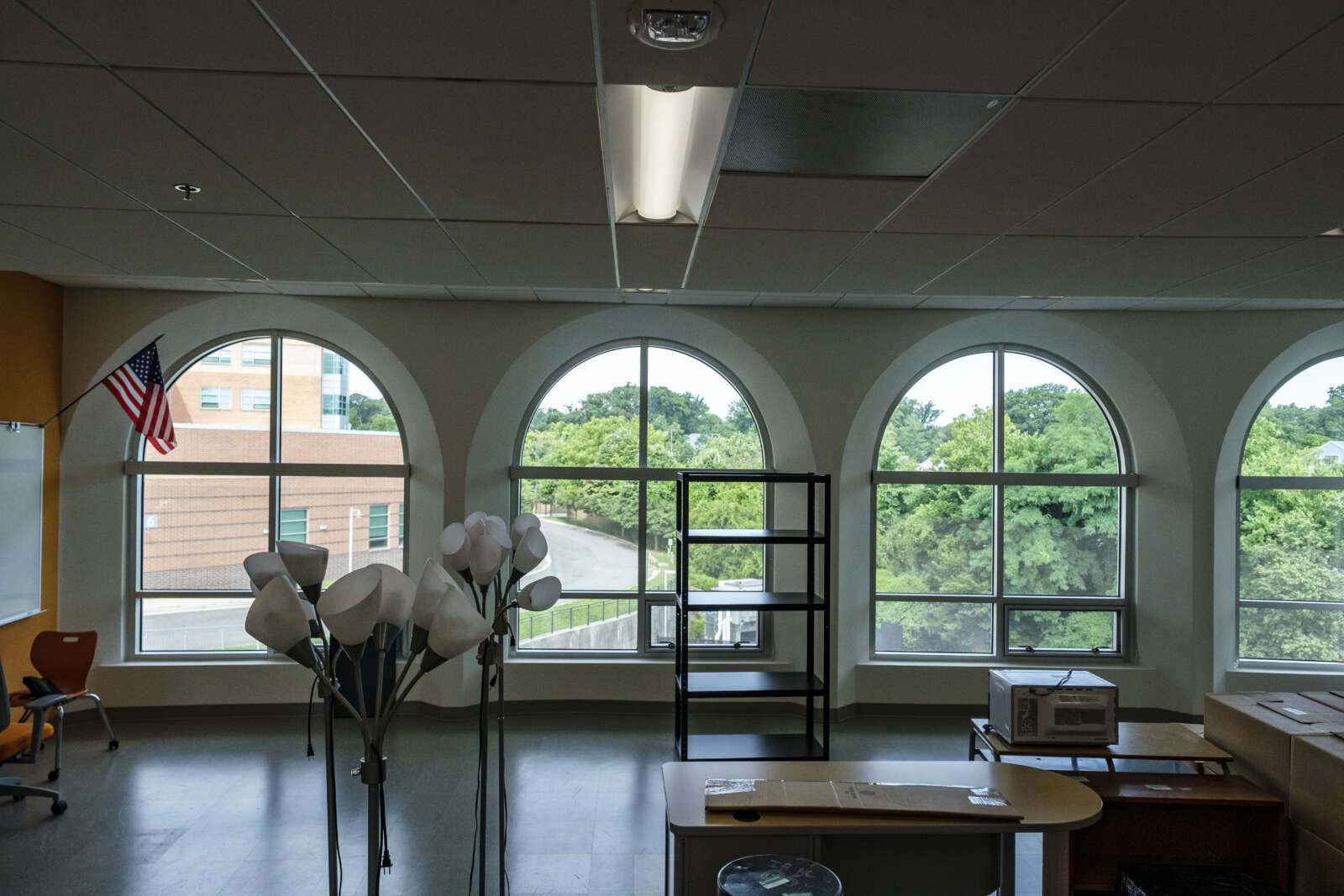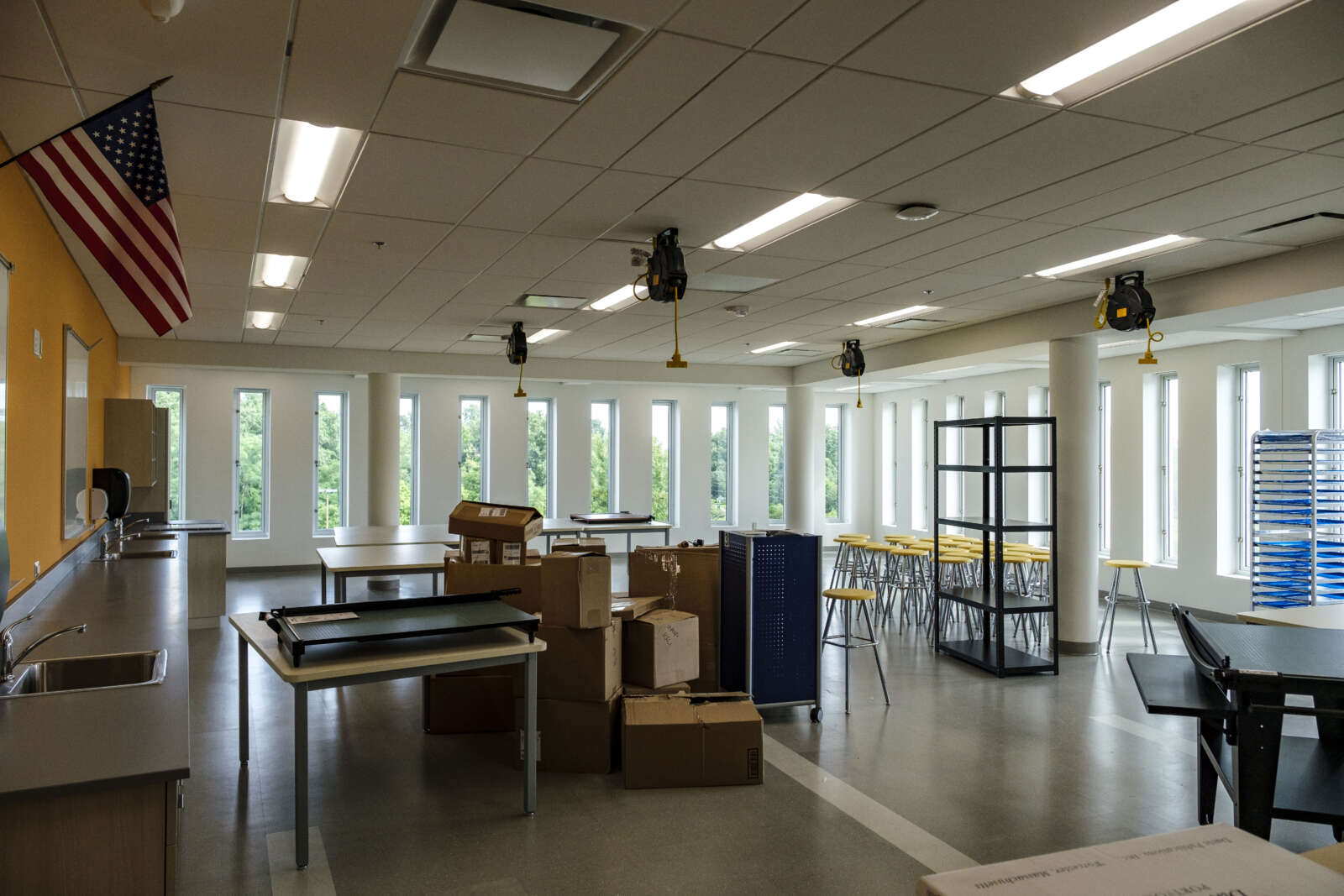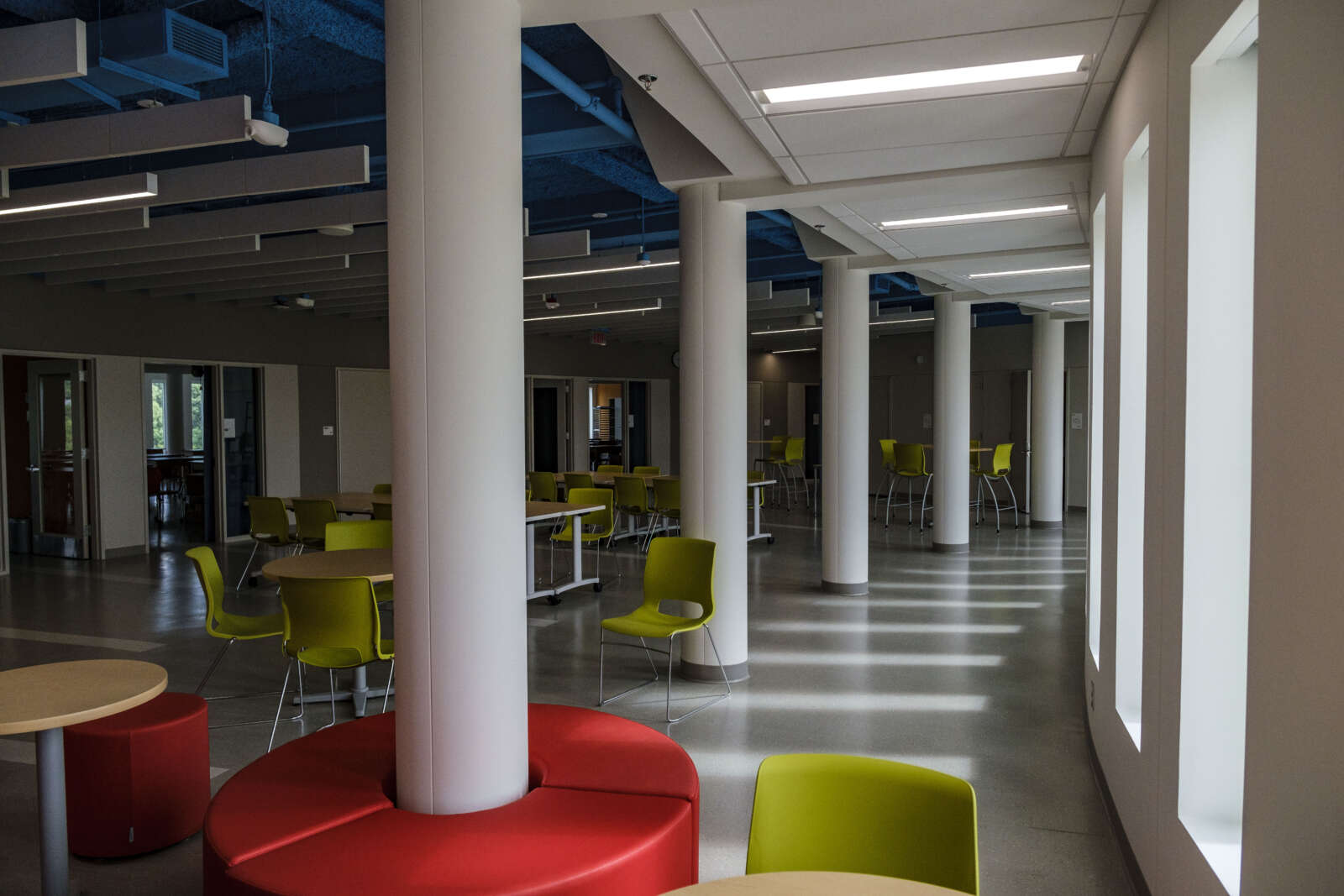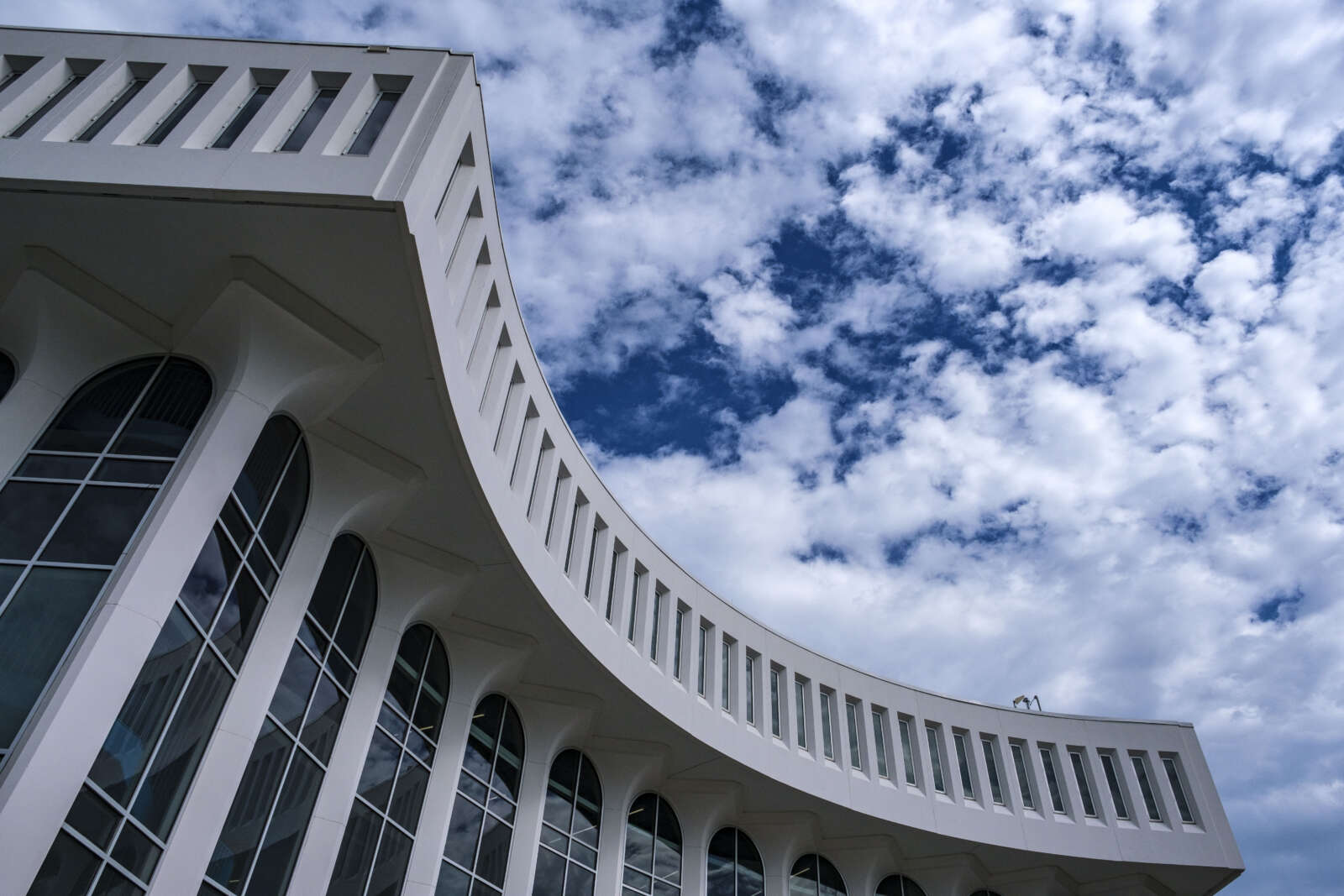The $38 million transformation of the Washington-Liberty annex is nearly complete.
Over the last three years, the nearly six-decade-old Arlington Education Center has undergone a complete overhaul to turn it into classrooms and school space for the burgeoning student body. This is the most significant renovation in the history of the building, which was completed in 1969 and previously used as the Arlington Public Schools headquarters. (The APS administrative offices are now located at Sequoia Plaza.)
We received an exclusive tour yesterday of the newly updated facility that is now updated classrooms, breakout areas, science labs, art studios, weight rooms, offices, and flex space. The project reached substantial completion back in June. With school less than two weeks away, it’s now all touch-ups, paneling, and inspections.
The annex is expected to open to students when the new school year starts later this month.
The goal of the project, APS’s director of design and construction Jeff Chambers told ARLnow while walking through the still-pristine hallways, was to turn an under-used office building into usable, updated school space.
“With this building, it’s set up so that it can be used for any type of classroom or for any grade,” Chambers said. “It’s going to be used by Washington-Liberty students when it opens, but it can be converted to be used for anything. The whole intent is that all of the classrooms can be modified and used for whatever program absolutely needs them.”
The five-floor, 55,000-square-foot facility can accommodate between 500 and 600 students. The building is shaped like a “quarter of a donut,” as described by project manager Robin Hodges, which allows nearly all of the classrooms a view of the outside while also facing inward towards the common areas.
Each level, with the exception of the ground floor, is similar in set-up, with the elevators moved back, large windows, and a common area with seating and furniture. The building’s footprint wasn’t expanded, though it might look that way.
“The ambient light into the classrooms and spaces has really made a huge improvement, opened up the building a lot more,” said Hodges. “Everyone that used to be here before and now walks the halls ask, ‘Did you make it bigger?’ No. We just have more daylight in the building.”
Chambers compared the old building’s lack of sunlight and darkness, particularly in the bathrooms, to walking into a famed Arlington landmark.
“It was like walking into The Broiler on Columbia [Pike] and you’re looking for your steak and cheese,” he said laughing, noting that they did a simulation of the sun’s movement and added window frits to help diffuse sunlight throughout the building.
The ground floor of the building is comprised of offices, conference rooms, and new physical education spaces. W-L’s weight room will be fully moved over to the new building by the beginning of classes, giving students more room to work out. There are also several empty rooms that are set to be used as aerobic studios.
When the plan of turning the Arlington Education Center into classrooms or a new school altogether was first discussed in 2017, there was a discussion of designating the “ed center” and the adjacent planetarium as a “historic district” due to its era-appropriate architecture style.
That request was denied by the Arlington County Board, but designers did keep a few elements that pay homage to the 1960s aesthetic. The exterior still has its distinctive arches on the windows and, on the third floor, those arches can be viewed from the interior.
“What we did was try to respect it on the inside. During some of the old renovations, they put in drop-in ceilings and blocked them off. They weren’t really visible,” said Chambers. “We wanted to respect… the mid-century modern [style].”
Another noticeable element is that mechanical systems have been moved outside of classrooms to not only provide the ability to service them without bothering classes but to help with noise pollution as well. A LEED requirement for new school construction is ensuring classrooms are “free of intrusive or disruptive levels of sound.”
The ceilings are paneled and painted white and blue to simulate a clear, puffy-clouded sky. Hodges noted that this was done based on studies that say children learn better surrounded by certain colors and hues.
All the bathrooms are designed identically, keeping with a relatively new Arlington ordinance that all bathrooms in county-owned facilities are to be all-gender. The bathrooms are currently marked with male and female signs, however. Chambers said this is merely signage and can easily be updated.
“The [state] building code still requires your fixtures to be counted as male or female. We do have it set up so that it can be gender neutral,” said Chambers. “And [the building code] will change. It just hasn’t.”
Additionally, there are new, updated security and lockdown features, including pull-down curtains that completely obscure views, push button locks on doors, and the ability to secure the entire building with a push of a single button.
With W-L expected to see an increase in student population in the coming years, an expansion of its facilities was much needed. The renovation will help, without sacrificing the student experience.
“This is an office building that’s been turned into classrooms,” said Chambers. “I think now when most people walk through here, they’ll think it’s supposed to be a school.”


